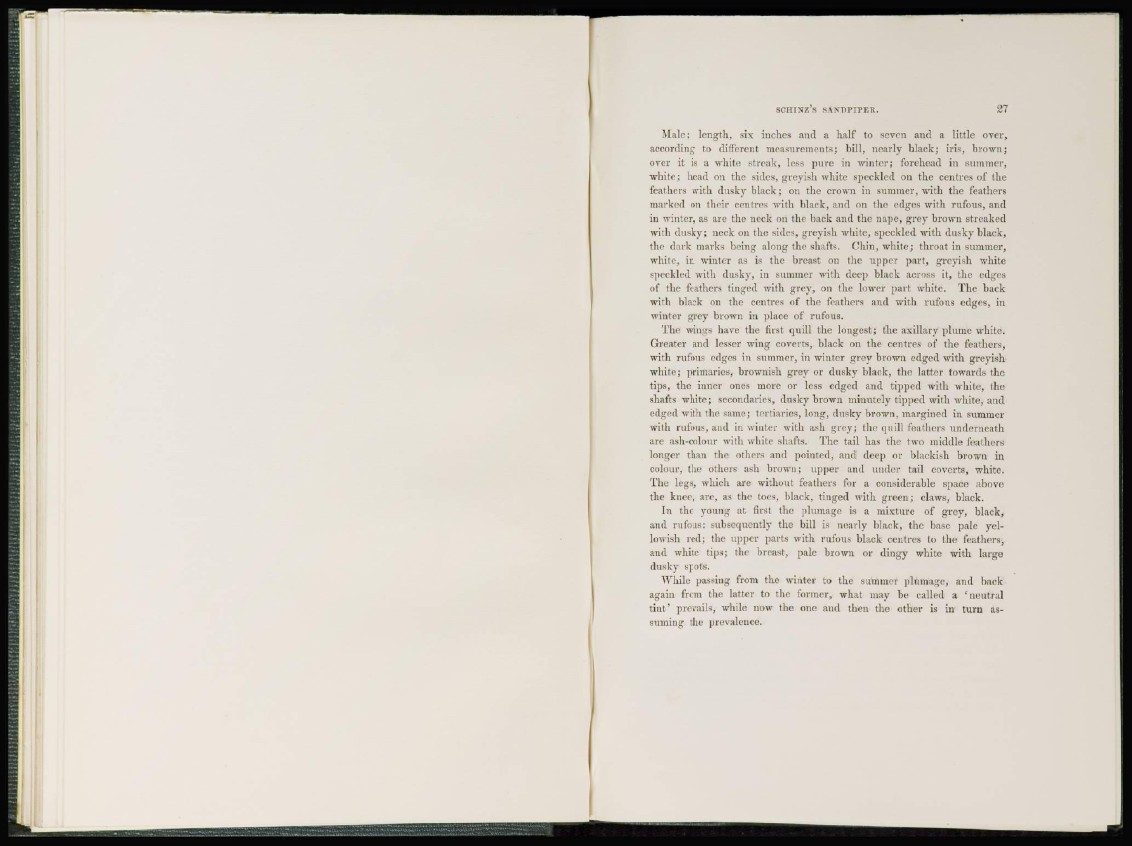
S C H I N Z S S A N D P I P E R .. 27
Male; length, six inches and a half to seven and a little over,
according to different measurements; bill, nearly black; iris, brown;
over it is a white streak, less pure in winter; forehead in summer,
white; head on the sides, g r e y i sh white speckled on the centres of the
feathers with dusky black; on the crown in summer, with the feathers
marked on their centres with black, and on the edges with rufous, and
in winter, as are the neck on the back and the nape, g r e y brown streaked
with dusky; neck on the sides, greyish white, speckled with dusky black,
the dark marks being along the shafts. Chin, w h i t e ; throat in summer,
white, in winter as is the breast on the upper part, greyish white
speckled with dusky, in summer with deep black across it, the edges
of the feathers tinged with grey, on the lower part white. The back
with black on the centres of the feathers and with rufous edges, in
winter grey brown in place of rufous.
The wings have the first quill the longest; the axillary plume white.
Greater and lesser wing coverts, black on the centres of the feathers,
with rufous edges in summer, in winter grey brown edged with greyish
white; primaries, brownish grey or dusky black, the latter towards the
tips, the inner ones more or less edged and tipped with white, the
shafts white; secondaries, dusky brown minutely tipped with white, and
edged with the same; tertiaries, long, dusky brown, margined in summer
with rufous, and in winter with ash grey; the quill feathers underneath
are ash-colour with white shafts. The tail has the two middle feathers
longer than the others and pointed, and deep or blackish brown in
colour, the others ash brown; upper and under tail coverts, white.
The legs, which are without feathers for a considerable space above
the knee, are, as the toes, black, tinged with green; claws, black.
I n the young at first the plumage is a mixture of grey, black,
and rufous: subsequently the bill is nearly black, the base pale yellowish
red; the upper parts with rufous black centres to the feathers,
and white tips; the breast, pale brown or dingy white with large
dusky spots.
AVhilc passing from the winter to the summer plumage, and back
again from the latter to the former, what may be called a 'neutral
t i n t ' prevails, while now the one and then the other is in turn assuming
the prevalence.